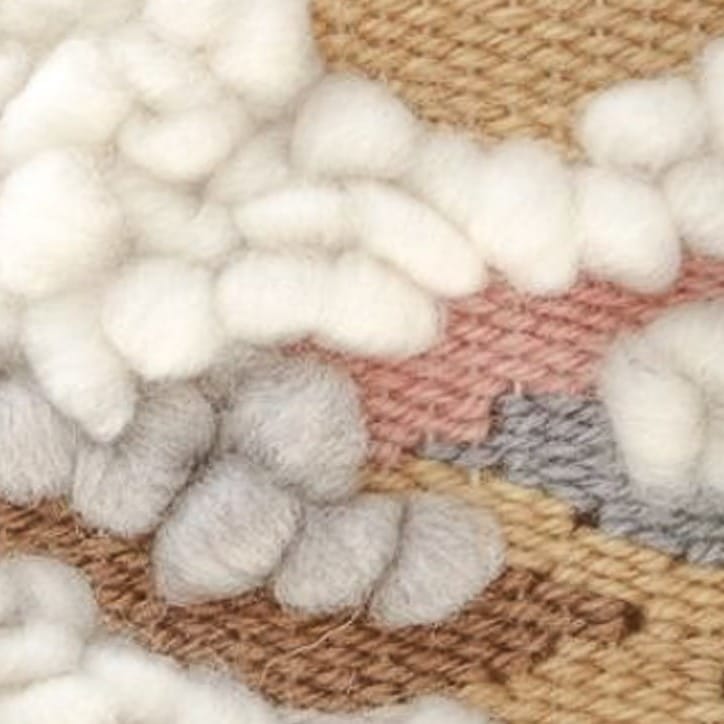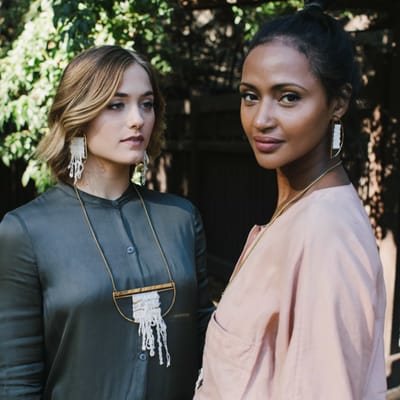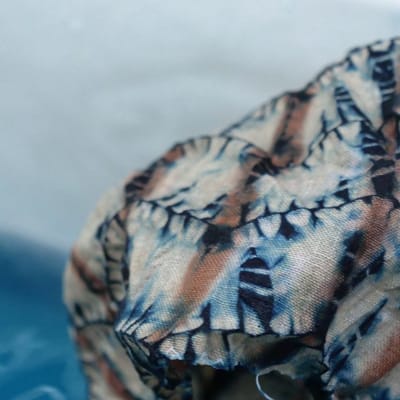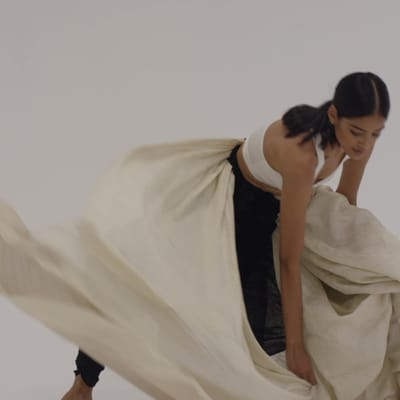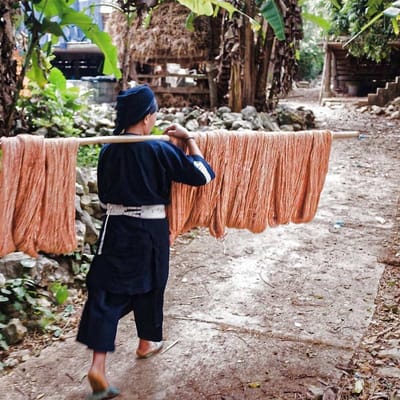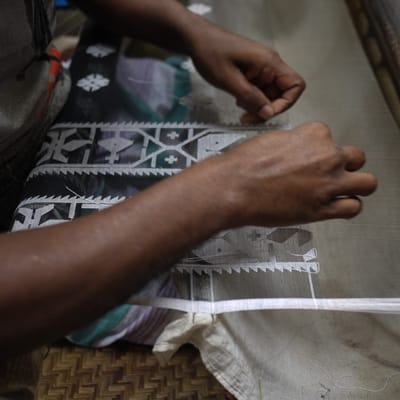Eucalyptus, banksia, melaleuca – the names alone are enough to conjure the colours, textures, and scents of the Australian bush. Born and raised in Melbourne, multidisciplinary artist Belinda Evans bottles the sensations of her homeland by working with natural dyes, infusing her art with a distinctly Australian feel.
Working under the name Alchemy, Belinda’s diverse artistic practice is centred on her love of sustainable, natural materials such as wood, clay, and linen. Her focus lately has been wall-hangings made by weaving hand-dyed merino wool and cotton fibres together on a small loom handcrafted from reclaimed timber. Subtle in hue and highly tactile, Belinda’s freestyle weavings are based on organic patterns that emulate different topographies: rolling sea, lush rainforest, arid desert. These connections are enhanced by Belinda’s use of natural dyes to colour all her yarns; each pigment extracted from a species of native flower, seed or leaf, foraged on her travels across Australia.
An advocate for slow living, Belinda decided to relinquish her full-time artist’s studio in 2012 and fully immerse her practice in the outdoors. Nowadays, she works from temporary workspaces in rural Victoria and beyond – often close to a river or under a canopy of trees, surrounded by the same environment where she sources her materials. Contributor to THE KINDCRAFT Emily Lush spoke to Belinda from her home base in Melbourne to find out more about her wild harvested ingredients and life-long fascination with botanical dyes.
THE KINDCRAFT
What first inspired you to experiment with natural dyes?
BELINDA EVENS
I have been interested in the colors that the natural world provides ever since I was a child. I was fascinated with the way some foods would stain my clothes or our table napkins even after they had been laundered, but others would not. I wondered what the difference between them was to cause some to stay only for a short while and others for many years.
As an adult, my fascination with nature has continued. I started formally experimenting with natural dyeing a few years ago as a way to capture the beauty and memories of the places that I encounter on my travels around Australia, and in my everyday life. It was really an extension of the foraging and arranging of plants that I have been doing my whole life. It was also another way to work the natural materials I find into beautiful and functional objects for everyday life - like the wood, ceramic, and textile work that I was already doing.
THE KINDCRAFT
Where do you source your materials?
BELINDA EVANS
I forage for dye plants everywhere I go – as I walk to work, on my travels, and in my friends' gardens. I'm constantly coming across new plants that I'd like to coax the colour from to capture the story of the place in which I found them. I’ve done enough natural dyeing with different plants now to have a good idea about how different species prefer to be handled and processed. I'm careful to take less than 10% of the material from any plant I harvest from, and never from areas set aside for the preservation of habitat.
THE KINDCRAFT
What are your favorite plants to work with?
BELINDA EVANS
I really enjoy dyeing with eucalyptus. It's such an iconic Australian species; the scent and sight of it make me feel at home, and the number of colours I've achieved using just this species is impressive. It's also plentiful near my home and wherever I travel, so I'm never short of eucalyptus to dye with.
I recently discovered a beautiful deep blue colour from a variety of kangaroo paw that I'd never dyed with before. No part of the plant itself was blue – it was dried, brown and littered the ground. It’s experiences like this that remind me there is beauty everywhere, and that sometimes I just have to take the time to look more carefully.
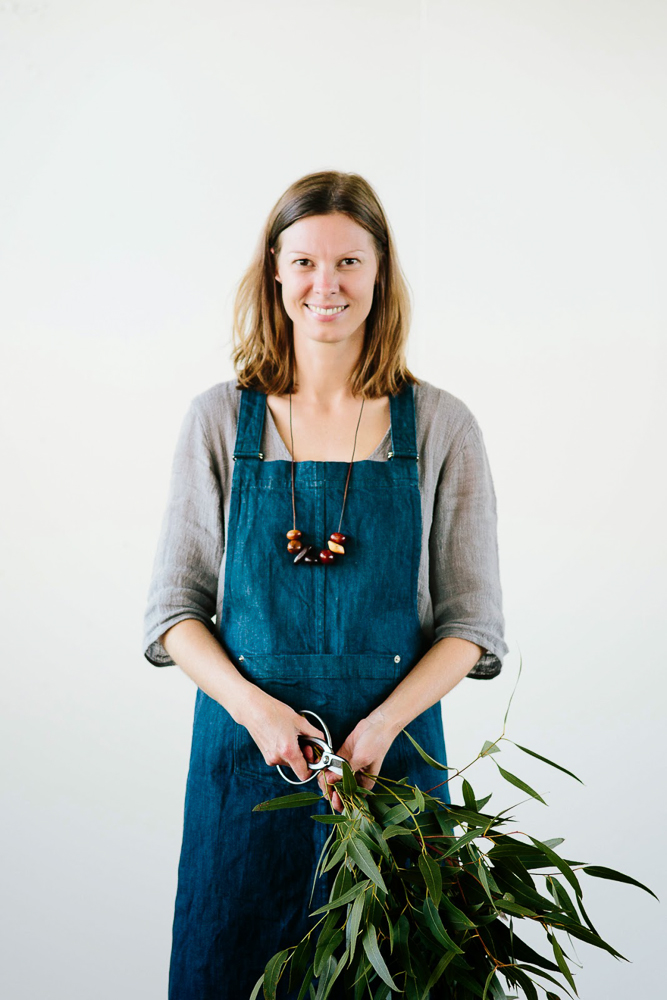
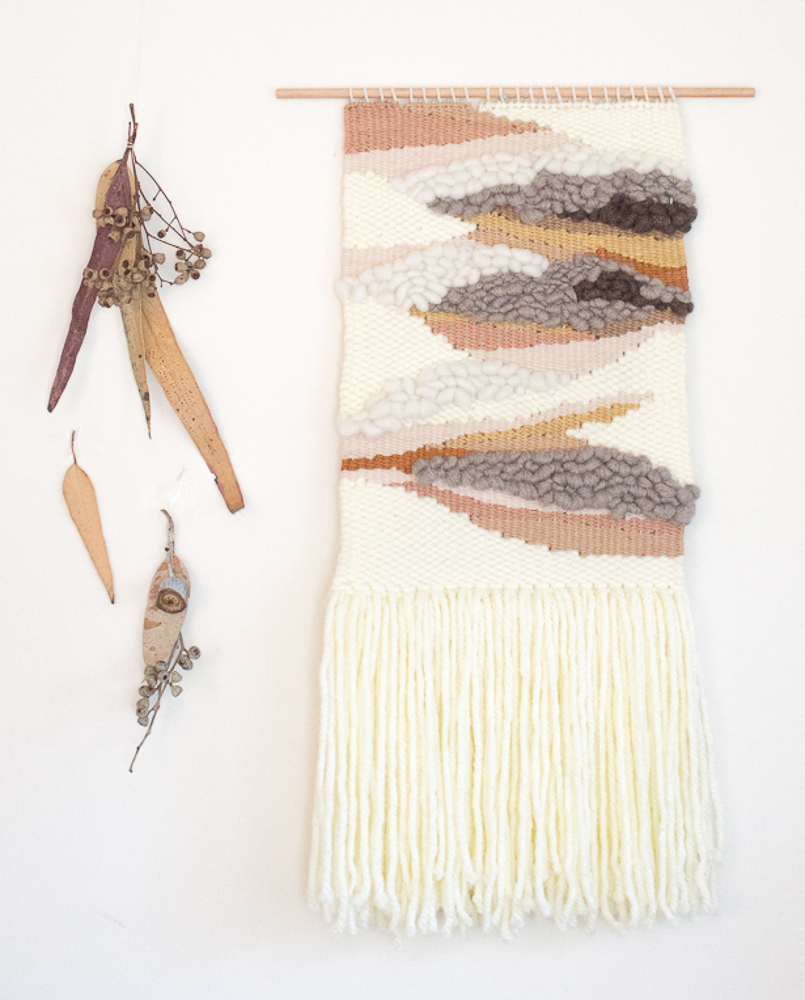
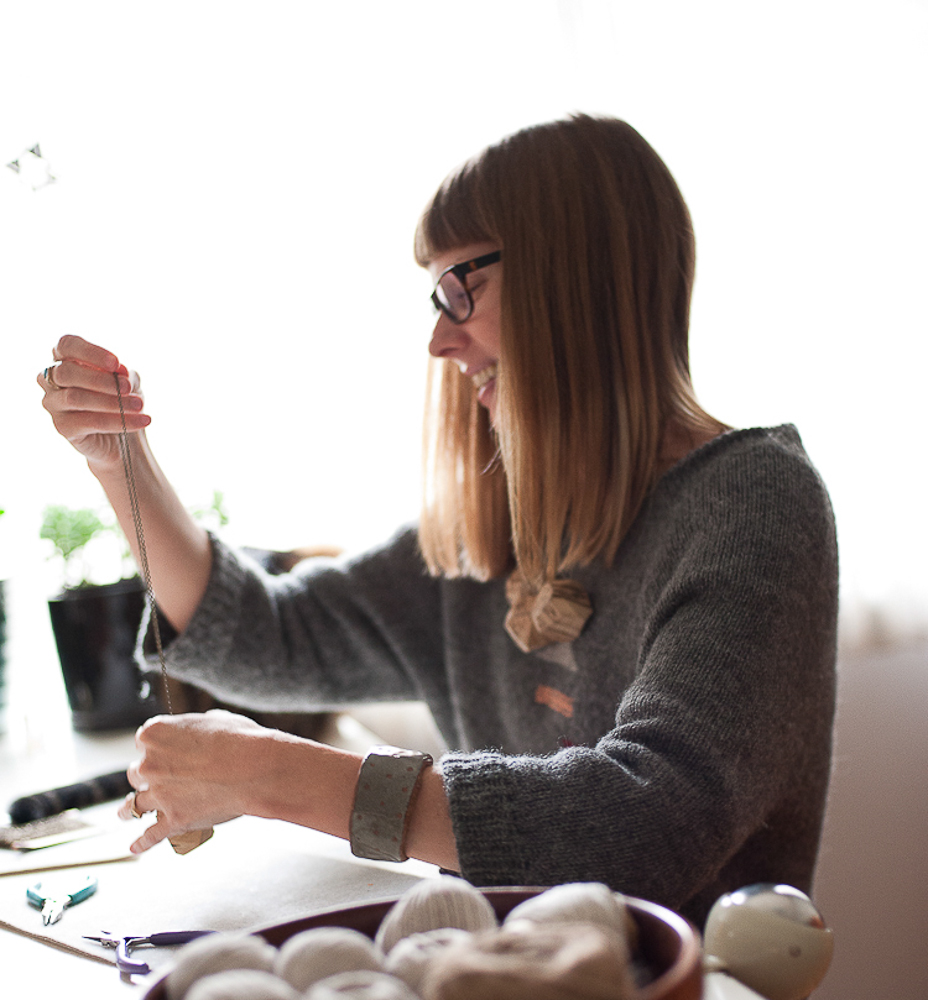
THE KINDCRAFT
How do you prepare your dyes?
BELINDA EVANS
I prefer to use only natural plant based mordants and modifiers in my dyeing process. I also utilise different dye pots to modify and fix colours. Different plants require different types of preparation, and I will also use different preparation methods depending on what effects I'm trying to achieve. For example, if I'm using bark or seeds to dye wool yarn, the plant preparation time takes about three to five days. The wool also needs preparation, and this can take one or two days.
THE KINDCRAFT
Could you briefly explain your studio set up?
BELINDA EVANS
I'm not currently working out of a fixed studio. I take my dyeing and weaving equipment with me wherever I am and take advantage of the plant materials and inspiration that surrounds me. I'm usually working outdoors, especially with my natural dyeing, and often in the same location that I've collected my dye materials. It's a great way to stay constantly inspired and connected with nature. I always work during daylight hours as I find that natural light is best for working with colours. My favourite time is the afternoon; it's when at my best creatively, physically, and energetically.
THE KINDCRAFT
How have the colors – and indeed the processes – of natural dyeing influenced your weaving practice?
BELINDA EVANS
I find that the processes of natural dyeing with foraged materials and tapestry weaving work beautifully together. The way I practise tapestry weaving is a very slow process, and working with natural dyeing slows the process further. Working with foraged flora slows it even further again. I really enjoy the slowness. For me, making is less about the finished product and more about the process itself. Using only the colours that nature provides in the places that I visit is very humbling. Unlike working with synthetic-dyed yarns (or even working with imported natural dye extracts, which have predictable colour outcomes), I'm at the mercy of what nature wants to give me at the time that I harvest her bounty. It has helped me to better appreciate my place in this world and work with, rather than against, the earth's natural cycles and patterns.
THE KINDCRAFT
You experiment with many different materials and modes of making. What is it about fibre art and natural dyes that captivates you?
BELINDA EVANS
In all of my creative work I'm most interested in using the natural materials that come my way, whether they be flowers, wood, clay, leaves, shells, stones, seeds or other treasures, to capture a memory. I find that textiles and natural dyeing allow me to do this in a way that I can create beautiful and functional objects that can be incorporated into everyday life. I also love the tactile nature of the textile arts, and am particularly captivated by the colours that Australian plants yield.

